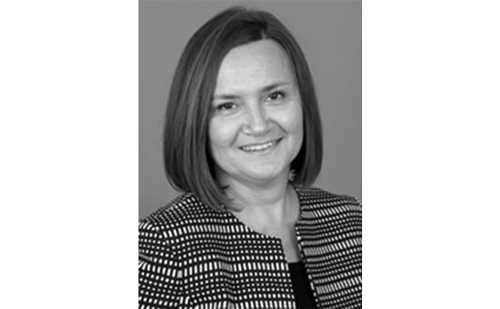It is more than 125 years since the classic description of narcolepsy was presented by Gélineau. Since then much has been learned about the background, diagnosis, and management of narcolepsy, especially over the last few decades. It is likely that hypocretin-producing cells in the lateral hypothalamus are selectively destroyed in genetically susceptible individuals carrying one or more alleles of the human leukocyte antigen (HLA) DQB1*0602. Significant advances have been made in treatment, and further progress is to be expected with increased awareness of the brain processes underlying the disease. Despite these advances, the majority of patients are still underdiagnosed and undertreated. As narcolepsy causes significant morbidity and has a substantial socioeconomic impact, there is a need for a more active approach in the management of these patients.
Definition
A diagnosis of narcolepsy can be carried out using polysomnography (PSG) to document sleep patterns and exclude other sleep disorders, and the Multiple Sleep Latency Test (MSLT) to record sleepiness with a short sleep latency—less than five minutes—and sleep-onset rapid eye movement (REM) episodes (SOREMPs). Recently, the diagnostic criteria have been updated to define narcolepsy with cataplexy, narcolepsy without cataplexy, and narcolepsy due to another underlying medical condition (see Table 1).
The high prevalance (>97%) of specific HLA typing has led to suggestions that it should be included in the criteria, but it is not specific for narcolepsy as HLA DQB1*0602 is present in approximately 20% of the background population. It is likely that low cerebrospinal fluid–hypocretin (CSF-Hct) may be included in the diagnostic criteria as >90% of patients with narcolepsy with cataplexy show abnormal CSF-Hct levels, whereas low CSF-Hct is found in a smaller proportion of patients with narcolepsy without cataplexy.1–3 However, it should be noted that other neurological diseases may present intermediate or low CSF-Hct values, and a number of patients with classic narcolepsy may present normal values.3 It is likely that patients with CSF-Hct may represent a subpopulation of narcoleptic patients, which may have future diagnostic, pathophysiological, and treatment implications. A potential limitation of the definition of narcolepsy is the primary inclusion of patients with excessive daytime sleepiness (EDS). The role of isolated cataplexy or hallucinations without significant EDS has not been established.
Epidemiology
Studies of the prevalence of narcolepsy with cataplexy have been found to be between 25 and 50 per 100,000 people in European countries, Japan, and the US. Thus, narcolepsy is a relatively frequent disorder. Apart from one study in Israel that presented a low prevalence rate, a relatively uniform distribution has been found in most countries. The information regarding occurrence is limited, with one study finding the incidence of narcolepsy with cataplexy to be 0.74 per 100,000 person-years.4 In Olmsted County, Minnesota, the incidence ciphers were 1.72 for men and 1.05 for women.5 These findings highlight the fact that the disease has an early onset and a chronic disease pattern: this frequency is similar to other neurological diseases, such as multiple sclerosis or parkinsonism.
The onset of the disease manifests as bimodal distribution with disease symptoms. Studies from Montpellier, France and Montreal, Canada presented evidence for a mean age at onset of 15 years and around 35 years, with a wide age distribution. Positive family history presented an increased risk of early onset, which suggests a strong genetic component.6 There is a slight gender preference, with a male predominance of 1.4–1.6:1.5
Applying classic epidemiology methods to narcolepsy have not yet identified the specific risk factors for disease development, apart from HLA typing and family history. As with other diseases characterized by selective cell loss—such as Parkinson’s disease or type 1 diabetes mellitus—narcolepsy is likely caused by environmental exposure before the age of onset in genetically susceptible individuals. The main difficulty in identifying such factors is the problem of the significant delay between disease onset and diagnosis, with a delay of at least 14 years. The most thoroughly examined factors include body mass index and stressful life events; however, such associations may reflect a disease consequence rather than a cause of disease. For example, it is likely that metabolic factors may be influenced by abnormal Hct function, and stress and depressive symptoms are as likely to be consequences as causes of disease.
In some cases there is a strong familial association of narcolepsy, although this explains only a minority of disease cases.7–9 Immune mechanisms are likely to be associated with narcolepsy. During the past few years antigens have been identified as part of the development of the disease,10–13 and as a consequence of these findings immune globulin treatment has been suggested.14,15 The main problem in interpreting these findings is that not all subjects present antigens, and the antigens are found in subjects with a long disease duration, which may mask a potential relation. Antigens that react against hypothalamic neurons are also found in control subjects, and other immune systems such as cellular mechanisms may be involved. Further prospective studies are needed.
Quality of Life and Socioeconomic Impact of Narcolepsy
Patients with narcolepsy are often psychosocially impaired in their work and interpersonal relations. Affected patients report significantly lower quality of life16–18 and a higher rate of depression and other psychiatric morbidities.19–21 These effects are comparable to those of other neurological diseases such as parkinsonism and epilepsy. Patients with narcolepsy present a lower educational level, are often unemployed, and have a lower income. The patients have higher morbidity and more contact with the healthcare system and, consequently, have elevated direct and indirect costs.16,22 The unemployment rate of patients with narcolepsy is in the region of two out of three, an occurrence that is much higher than in control groups.22 There are no indications that the families of narcoleptic patients are demographically situated in lower social groups. Neither are there any indications that intelligence is lower nor cognitive function impaired, apart from attention and executive functions that can be related to sleepiness.23,24
Patients with narcolepsy may be at a higher risk for traffic accidents. Despite the fact that this has been legally addressed in several countries, there are only a few studies addressing traffic concerns regarding narcolepsy. Historical cross-sectional studies suggest a higher occurrence of traffic accidents,25–27 but there are no formal studies showing the absolute risk for these patients. There are no prospective studies evaluating the effect of risk during medication. Awareness should be raised regarding the potential risk for traffic accidents in unmedicated patients, but there is a need for further studies in this area, including the potential effect of treatment.
However, in most patients the disease is not correctly identified or diagnosed. For example, when applying prevalence ciphers to Denmark, approximately 2,500–3,000 patients should be identified, but fewer than 500 patients were diagnosed with narcolepsy in the period between 1997 and 2006. Furthermore, it is surprising that more than two-thirds of these patients are not being formally medically treated or controlled, according to the Danish National Registry. It is likely that similar findings are also present in other western countries. There is little information regarding the quality of the evaluation and management of patients in different healthcare systems, as only a few studies have addressed such matters. Furthermore, a diagnosis of narcolepsy is often incorrect, and a wide variety of mental and neurological disorders have been given before submission to a sleep clinic. Frequently, a significant delay of several years occurs between the onset of the disease and a diagnosis of narcolepsy,28 which suggests a high frequency of missed diagnoses. These findings, together with the clinical pattern of the disease, may explain the long interval between onset of the symptoms and a correct diagnosis. Since the symptoms of narcolepsy usually appear during adolescence, this means that most narcoleptic patients are diagnosed too late to prevent the dramatic impact of the disease on their personal and professional development.
Management of narcolepsy may improve quality of life and social and professional contact. Treatment with methylphenidate, modafinil, and potassium oxybate may enhance quality of life,29–32 but no studies have yet presented evidence for an improvement in education, school grades, work capabilities, socioeconomic function, or driving skills after treatment. Therefore, there is a significant need for further studies addressing socioeconomic aspects and the consequences of narcolepsy, including the effects of medical and non-medical treatment modalities. ■













